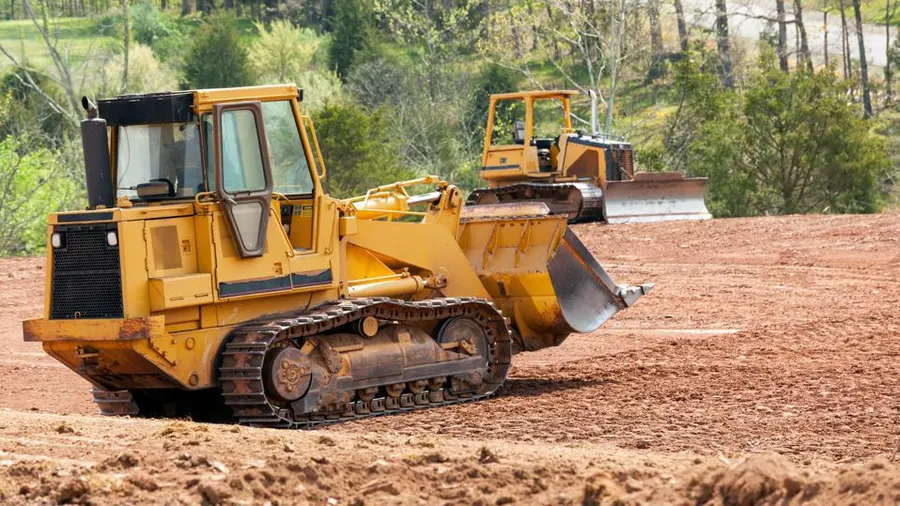Preparing the Ground: A Guide to Land Clearing for Landscaping
Every beautiful garden or lawn begins with a well-prepared ground. Land clearing is the critical first step in the landscaping process, ensuring that your space is ready to support healthy plants and trees. This guide is tailored for homeowners who want to embark on a landscaping project, offering valuable insights into the land-clearing process.
Why Land Clearing is Important
Land clearing involves removing trees, shrubs, stones, and other obstacles from your yard. This process is crucial for several reasons:
- Healthy Soil: Clearing unwanted vegetation and debris improves soil quality by reducing competition for nutrients.
- Enhanced Aesthetics: A cleared space offers a clean slate, allowing you to design your landscape precisely as you envision it.
- Safety: Removing hazardous materials like dead trees or large rocks can prevent accidents and injuries.
- Pest Control: Clearing the land helps eliminate habitats for pests like rodents and insects, protecting your future plants.
Steps to Effective Land Clearing
1. Assess Your Land
Begin by conducting a thorough assessment of your land. Identify the types of vegetation and obstacles present. Note any slopes, drainage issues, or areas requiring special attention. This initial evaluation will help you create a strategic plan for clearing your land.
2. Obtain Necessary Permits
Depending on your location, you may need permits for land clearing, especially if it involves tree removal. Contact your local government or zoning office to inquire about the necessary permits and regulations. Compliance with these regulations ensures your project proceeds smoothly and legally.
3. Plan Your Clearing Approach
Your clearing approach will largely depend on the size and complexity of your project. For smaller yards, manual clearing with tools like shovels, rakes, and pruners can be effective. For larger areas, consider renting or hiring machinery such as chainsaws, stump grinders, and bulldozers. It’s also essential to consider the disposal method for the cleared debris.
Organic material can be chipped and composted, while larger stumps and rocks may require professional removal. In some cases, you might need to think about erosion control measures, especially if clearing a slope or near a water body.
Proper planning ensures that your land clearing process is efficient, safe, and environmentally responsible.
4. Remove Unwanted Vegetation
Begin by identifying and removing any unwanted vegetation, such as invasive plants, overgrown shrubs, and dead or diseased trees. Use appropriate tools for the job; for example, a chainsaw or axe can be used for cutting down trees, while pruners and shears can help tackle smaller plants and branches. Focus on clearing the larger vegetation first, as this will give you better access to the ground-level obstacles later. Maintain safety by wearing gloves, eye protection, and sturdy footwear. Once the large vegetation has been cleared, proceed to remove smaller plants and debris.
Heavier roots and stumps may require more effort and possibly even specialized equipment like a stump grinder. Clearing away unwanted vegetation not only helps enhance the aesthetics of your landscape but also allows for better soil preparation.
Removing invasive species is particularly important, as they can outcompete desirable plants for nutrients and water. After removing unwanted vegetation, you should have a clean, open space ready for the next phase of your landscaping project.
5. Tree and Stump Removal
Removing trees and stumps is often the most challenging part of land clearing. Depending on the size and number of trees, you might need specialized equipment such as chainsaws, stump grinders, or even heavy machinery for large stumps. If the task seems overwhelming, consider hiring experienced landscape designers in Salt Lake City. These professionals can safely and efficiently handle tree and stump removal, ensuring the ground is perfectly prepared for your landscaping project. They also provide valuable expertise on the best practices for preventing soil erosion and optimizing soil health post-removal.
6. Clear Rocks and Debris
Removing rocks and debris is crucial for creating a smooth and even surface. Use shovels, rakes, and wheelbarrows to collect and dispose of these materials properly. Consider renting a mini-excavator for larger rocks.
7. Improve Soil Quality
Once the land is cleared, focus on improving soil quality. Conduct a soil test to determine its composition and pH levels. Based on the results, amend the soil with organic matter, compost, or specific fertilizers to ensure it’s fertile and ready for planting.
8. Implement Erosion Control
Implementing erosion control measures is essential to prevent soil erosion, which can undermine your landscaping efforts and damage the environment. Start by assessing the potential for erosion on your cleared land, especially on slopes or areas with loose soil.
Utilize techniques such as mulching, installing silt fences, and planting ground cover to stabilize the soil. Mulching helps to retain moisture and protect the soil surface, while silt fences can catch sediment and prevent it from washing away during heavy rains.
Planting grass or ground cover plants not only stabilizes the soil but also enhances the aesthetic appeal of your yard. Additionally, consider creating terraces or retaining walls for steep slopes to slow down water runoff and further prevent erosion. By addressing erosion control proactively, you create a sustainable foundation for your landscape to thrive.
9. Plan Your Landscape Design
With the land cleared and prepared, it’s time to plan your landscape design. Consider factors such as plant selection, choosing plants suited to your soil type, climate, and sunlight exposure. Plan an efficient irrigation system to ensure your plants receive adequate water. Incorporate hardscaping elements like pathways, patios, and retaining walls to enhance the overall design.
Conclusion
Land clearing is a fundamental step in any landscaping project, setting the stage for a beautiful and thriving outdoor space. By following these steps, homeowners can effectively clear their land, improve soil quality, and create a safe and aesthetically pleasing environment for their landscaping endeavors.
Are you ready to transform your yard? Start with a well-prepared ground and watch your landscaping dreams come to life.






